Heroism and Martyrdom for Mother Nature
Dr Abe V Rotor
Part 1 - Heroes for Mother EarthPart 2 - Apostles for the Environment TenetsPart 3 - Filipino Environmentalists - A continuing listPart 4 - Ecological Concept of the CrossPart 5 - Saint Francis of Assisi - Father of EcologyPart 6 - Laudato Si (Praise be to you.) Pope Francis encyclical letter(On Care for Our Common Home).Part 7 - Summary Quotes under each Chapter of Laudato SiPart 8 - Ramon Magsaysay Awardees: New Breed of HeroesPart 9 - Bioethics and EnvironmentPart 10 -Three Philosophies on Today's Environmental RevolutionPart 11 - Ecological Balance and Harmony - Reflection of the Good LifePart 12 - Scenarios of our children living in a Postmodern World - A bright outlook
Part 1 - Heroes for Mother Earth
Then in the past century man began to dominate nature and soon attempted to overrun the planet. It was a 360 degrees turn. Today, rather than defending himself against nature, he has realized that he needed to defend nature against himself. This is the beginning of a new environmental movement. Leaders of this movement are acclaimed protectors of our home – our only home, Planet Earth. They are regarded as the new breed of heroes. Now, who are these heroes? As we go through these names and analyze their contributions we hope to be able to understand this new concept of heroism.
This is the beginning of a new environmental movement. Leaders of this movement are acclaimed protectors of our home – our only home, Planet Earth. They are regarded as the new breed of heroes. Now, who are these heroes? As we go through these names and analyze their contributions we hope to be able to understand this new concept of heroism.
Theodore Roosevelt, often referred to as Teddy or TR, was an American statesman, author, explorer, soldier, naturalist, and reformer who served as the 26th President of the United States, from 1901 to 1909.
- Theodore Roosevelt (1858-1919) was the first president to make conservation as a national policy.
- Ernest Schumacher (1911-1977) did not believe in endless growth, mega-companies and endless consumption, His book Small is Beautiful became a best seller.

Ernst Friedrich "Fritz" Schumacher was an internationally influential economic thinker, statistician and economist in Britain, serving as Chief Economic Advisor to the UK National Coal Board for two decades.
- Barbara Ward (1914-1981) is the author of Only One Earth which shaped the UN environmental conference.
- E.O. Wilson (1929- ) PHOTO founded sociobiology in the 70s, saying that such human behavior as sexuality, aggression and altruism had a genetic basis. Recently he articulated the importance of bio-diversity in keeping the Earth healthy.
 Edward Osborne "E. O." Wilson FMLS is an American biologist, researcher, theorist, naturalist and author. His biological specialty is myrmecology, the study of ants, on which he is considered to be the world's leading expert.
Edward Osborne "E. O." Wilson FMLS is an American biologist, researcher, theorist, naturalist and author. His biological specialty is myrmecology, the study of ants, on which he is considered to be the world's leading expert.
- Paul Crutzen (1933- ), F. Sherwood Rowland (1927- ) and Mario Molina (1943- ) showed that man-made chemicals, the major culprit chloro-fluoro-carbons or CFC, destroys the ozone layer. The 1987 Montreal Protocol phased out CFC. Nobel prizes were given to the three scientists.
- Jacques-Yves Cousteau (1910-1995? ) Oceanographer and showman, espoused the need to arrest the declining health of the oceans.
- Rachel Carson (1009-1964) Mother of modern environmentalism, wrote Silent Spring documenting the deadly carnage of wrought by pesticides.

- Aldo Leopold (1887-1948) advocated the total protection of certain wilderness areas, established the land ethic which is summed up, “anything that harms an ecosystem is ethically and aesthetically wrong.”
- Barry Commoner (1917- ) Paul Revere in ecology, one of the first scientist to worry about the deteriorating environment, organized the eco-based Citizens’ Party ticket which paved a new political movement.
- Barry Commoner was an American biologist, college professor, and politician. He was a leading ecologist and among the founders of the modern environmental movement.


- Wangari Muta Maathai was a Kenyan environmental and political activist. She was educated in the United States at Mount St. Scholastica and the University of Pittsburgh, as well as the University of Nairobi in Kenya.
- Wangari Maathai (1940- ) activist, organized the Green Belt Movement against reckless development in Kenya, stopped construction of a 69-storey office tower in a vital public space.
- Robert Hunter (1941- ) and Paul Watson (1950- ) pioneers of Greenpeace, then founder a more radical eco-organization, Sea Shepherd Conservation, and latest, Greenspeak and Frankenfood which are against genetically modified foods.
- Medha Patkar (1954- ) activist, forced WB to withdraw support Sardar Sarovar Dam along India’s Narmada River, saving half a million villagers from being displaced.
- Chico Mendes (1944-1988) Brazil environmental conscience, formed human barriers whenever chain saws and bulldozers threatened the rainforest, cut down by ranchers’ bullets.
There are many other Heroes for the Planet Earth, unknown and unsung. On the part of the church, St. Francis of Assisi is regarded as the patron saint of ecology. In ancient times, Aristotle was the first naturalist of global significance, and whose works are still relevant today.
Among the philosophers, Henry David Thoreau is known for his discourse on human liberty and survival in “Walden Pond” which still stirs imagination on how one man can live alone in the wilderness yet retains his rationality.
Philippine national hero Jose Rizal as a student
We have our own national hero Dr. Jose Rizal as an environmentalist in exile at Dapitan, and a naturalist even when he was a boy.


1. ADIVOSO, Angelica Cyril Cruz “AC” Faculty, College of San Benildo, Cainta, Rizal,
2. ARENAS, Minerva C “Mines” Faculty, Nueva Ecija High School, Cabanatuan City
3. CALIPJO, Arleen M “Arlene” Faculty, Cavite State University, Silang, Cavite
4. CHAO, George Y “George” Faculty, College of Engineering, UST
5. DE GUZMAN, Romualdo B Jr “Jun” Faculty, Bataan Peninsular State University
6. DELIMA, Precila C “Precy” Faculty, Isabela State University, Cauayan City, Isabela
7. DEMAUSA, Mary Joy C “Mary Joy” Staff Laboratory, University of the East, Caloocan
8. MANUBAY, Frederick Ray A “Fred” Faculty, High School, UST
9. ORDOñEZ, Ma Manuela P “Marie” Faculty, San Sebastian College, Recoletos, Cavite City
10. PANGANIBAN, Citadel Faculty, Lyceum of the Philippines University, Batangas
11. SANTOS, Hetdiliza A “Hydie” Faculty, Navotas National High School
12. VILLANUEVA, Laarni M “Lani” Faculty, Lyceum of the Phil U, Batangas
Apostles for the Environment Tenets
1. When spring comes without stir, “don't go gentle into the night,” rise and find out where have all the birds gone that herald the new season, and the new beginning of life.
2. When the monsoon ends too soon, summer sets early, the land scorched, the rivers and ponds dried up, warn of the coming of a severe El Niño, a cyclical phenomenon.
3. When algal bloom in make-believe proportion spreads in lakes, sound the alarm of fish kill coming in order to avert losses and hunger, and to save the ecosystem.
4. When people move to cities in exodus, convince them, advise government, it is a tender trap that takes them away from the real Good Life on the countryside.
5. When clouds simply pass over the landscape, take the lead to reforest the hills and mountains, restore the watershed with a million and one trees.
6. When flood sweeps the land taking with it lives and properties, and eroding soil fertility, be part of rehabilitation and planning; believe that flood can be tamed.
7. When you find an abundance of lichens of different types on trees and rocks, and fireflies at night, assure residents of the pristine condition of their environment, and help them in preserving it.
8. When and where wildlife areas are shrinking, backyards and idle lots can be developed as alternative wildlife sanctuary, initiate this as a community project.
9. When asked what vegetables are safe from pesticide residues and chemicals from fertilizers, promote native species like malunggay, kamote tops, gabi, saluyot, and the like, they are also more nutritious and easy to grow. And promote natural or organic farming, too.
10. When asked of Nature's way of maintaining the ecosystem, explain the role of nitrogen-fixing microorganisms, composting, symbiosis, and the like. These natural processes and cycles have been taking place even before the arrival of the human species.
11. When additives are found in food - MSG, Nutrasweet or any artificial sugar, salitre in sausage, sulfite in white sugar, melamin in milk, formalin in fish, warn the public against taking these, initiate through legislation and campaign to ban these additives.
12. When children spend too much time before the TV, on computers, and other gadgets, offer alternatives more favorable to their upbringing and well-being by getting close to nature like camping, gardening and other outdoor activities.
13. When old folks talk about traditional wisdom and values, demonstrate native skills, listen and translate them into useful applications, disseminate these in school and through extension.
14. When animals are restless, reptiles and rodents coming out of their burrows and dens, fish attempting to escape, fowls noisy, suspect the coming of a force majeure such as earthquake. Be alert to face possible consequences, and to extend assistance.
15. When epidemic threatens an area, say bird flu, hepatitis, dengue, cholera, initiate community cooperation with health and other institutions to arrest the spread of these diseases.
16. When a child has little concern about the environment, teach him, guide him to explore the beautiful world of nature, and make him realize his importance and his role in maintaining a balanced environment.
17. When there is a worthy movement to save the environment, such as Clean and Green, Piso sa Pasig, or any local campaign, lead and extend your full support.
18. When there are farms and fishponds neglected or abandoned, find out how these are put back to their productive conditions, or converted into a wildlife sanctuary.
19. When at rest or in confinement for health reason, explore natural remedies with herbals, through pet therapy, aromatherapy, and other proven remedies, in consultation with your doctor.
20. When in doubt if civilization is disguised evil, which is the root of war, poverty, environmental degradation, and the like, remember that it is also civilization that is responsible in building the great institutions of mankind, so that it is the obligation of each member of society to maintain the integrity of these institutions – indeed a noble mission to lead.
21. When appreciating the vastness of creation such as the seas, valleys, mountains, and entertain the idea that their resources are unlimited, view these in their microcosm like a pond or hill - for what can happen to this minuscule could be the same on a larger scale and proportion – be the prophet, but not of doom.
22. When you shall have found success in scholarship, wealth, power, family, etc., the task of integrating all these for the purpose of sharing with those in dire need, and for posterity and sustainability, becomes a greater challenge, indeed this is the price of success.
23. When devoting your time and energy and talents to the service of community and environment as dictated by your profession and as a good citizen, do not neglect your obligation to yourself and family, and by so doing, build a model on which you are looked up to by those you serve.
24. When hope dims in this troubled world, with continued disregard to protect Mother Earth, human abuse and indifference in pursuit of economic gains and affluence, violation of order and harmony of society, degradation of values, “don’t go gentle into the night” – be the sentinel ever vigilant, the guardian ever righteous, for opportunity awaits you in your greatest hour.
25. When on a fine Sunday morning you hear birds in the trees, fish splashing in a pond, and plants blooming, say a prayer of praise and thanksgiving in music and verse, painting, or simply through reflection of the magnificence of creation. ~
NOTE: To my students in particular, please recruit twelve (12) followers from your family, community and organization, who believe and are willing to carry on the tasks we have set. These 25 tenets serve as guide in your recruitment and selection. This invitation is open to all viewers here and abroad.
Part 3 - Filipino Environmentalists - A continuing list


Von Hernandez drew the line at another lucrative export from the developed world: mountains of trash. Across Asia, waste incinerators pump out clouds of dioxin and other harmful chemicals that come from agriculture and industry.
 Gina Lopez fought against open-pit mining, led the rehabilitation of Pasig River, transformed a once threatened portion of La Mesa watershed into an open park (PHOTO, right)
Gina Lopez fought against open-pit mining, led the rehabilitation of Pasig River, transformed a once threatened portion of La Mesa watershed into an open park (PHOTO, right)- Melania Dirain, Forest Specialist.
- Jojo Malinao, Forest Guard
- Logendrin Aranca, Forest Ranger
- Bernabe Malijao, Tree Maker
- Wilfredo Bayucot, Forest Ranger
- Isidro de la Peña, Forester
- Jaime Diez, Tree Maker ~
Those honored were DENR workers Joselyn Aleste Bugaring, officer-in-charge of the Kalinga Provincial Environment and Natural Resources Office; Norberto Mabini, Land Inspector I in Lianga, Surigao del Sur; Rolando Sinday, tree marker in Lianga, Surigao del Sur; Isidro Roluna, tree marker in Tandag, Surigao del Sur; Jessie Comendador, a laborer in Los Baños, Laguna; and deputized forest protection officer in Bukidnon Fr. Nerilito Dazo Sator.
Eco-warrior tactic: Dubbed the "dragon woman," she is one of the first Filipinos that comes to mind when speaking of eco-warriors. With her sharp memory and fearless questioning, she negotiates hard such that a Westerner who asked not to be named told The Guardian, "Even the Americans quake in fear of her. She terrifies them."
She says: "I don’t live up to their prejudices of what is a third-world woman. That’s what they don’t like about me," she told The Guardian in reaction to what an unnamed British diplomat said about the climate change negotiations being like a 1960s ideological war.
2. Jurgenne Honculada-Primavera
Who she is: Dr. Jurgenne (pronounced "Georgine") Honculada-Primavera was awarded the 2008 TIME Magazine Hero of the Environment for campaigning for sustainable fish farming to protect the lessening multi-useful mangrove forests.
Eco-warrior tactic: Mangroves might seem less profitable compared to the aqua farms that have replaced mangrove forests but they’re no less vital. Primavera champions mangroves because of their many uses like helping regulate floods and providing wildlife nutrition and habitat. She gives lectures not just on mangrove conservation but also on "beach forests, native trees and climate change." When she’s not deep in her mangrove advocacy, she plants at home or in a mini-forest in Miag-ao her family has been nurturing for 15 years.
She says: "To [those who will go abroad] and to those who remain but become call center employees, after you earn lots of money, go back to what you trained for and make a contribution, whether in fisheries or economics or biology or mass communications. Then you will put a lie to last year’s Hong Kong column of Chip Tsao calling the Philippines a "nation of servants" and vindicate the faith of... Jose Rizal, in you as the hope of the Mother and Fatherland."
3. Illac Diaz
Who he is: This social entrepreneur helped launch Design Against the Elements, an international contest on environment-friendly and resilient urban housing, in March. A former commercial model, he is also one of the Ten Outstanding Young Persons of the World in 2006, a World Economic Forum’s Young Global Leader awardee in 2008 and the only Filipino who made it to CNNgo.com’s "Hot List: 135 People to Watch" in 2009.
Eco-warrior tactic: From creating award-winning projects like affordable urban housing for seamen with his team at the Massachusetts Institute of Technology, Diaz now helps lead the international green urban housing contest, Design Against the Elements. The contest encourages its about 3,000 architect participants to create high-rise buildings that can be duplicated. In line with the project, Diaz brought together over 40 local artists for the song, "Stand Up," which calls for people to be ready against climate change.
He says: "If we think ahead of time, we can start realizing that we have to do something proactive. The pattern of weather has been crazy and there’s nothing to stop it unless we do something ourselves."
4. Anna Meloto-Wilk
Eco-warrior tactic: Anna’s passion for the environment started in 2005 when she and her husband Dylan made a conscious effort to use cloth diapers instead of disposable ones that take 500 years to biodegrade. While Dylan, a Gawad Kalinga volunteer, set up a network of Gawad Kalinga volunteers in the U.S. in 2007, Anna noticed a growing trend of more affordable natural and homegrown products. When her sister Camille followed them to the U.S., they researched on how to recreate this phenomenon in the Philippines. They collaborated with a natural formulator to create the body care line, Human Nature, made from mostly natural and locally grown materials. Without the "high cost of advertising and costly retail stores," the products are relatively cheap. They launched the line on November 2008 and have recently sold their one-millionth product after just 16 months of operation.
She says: "Selling our one-millionth product... proves that businesses can be highly successful while actively loving our country, the poor and the environment."
5. Krie Reyes-Lopez and Candy Reyes
Who they are: Looks like green consciousness runs in the family. Krie Reyes-Lopez is the brain behind Messy Bessy, a local line of environment-friendly cleaning products, while her sister Candy Reyes leads the Pedala Bike Messengers, a pollution-free delivery service.
Eco-warrior tactic: Because of a lack of local alternatives to cleaning products, Lopez created Messy Bessy after a rigorous hunt for suppliers and chemists. Launched in 2007, the non-toxic, natural and biodegradable cleaning agents became bazaar hits, and are now available in malls, organic stores and markets. The bestsellers include the first products she made herself: the Minty Orange Surface Cleaner and Eucalyptus All-Purpose Scrub. Lopez also formed HOUSE (Helping Ourselves Through Sustainable Enterprises), which helps disadvantaged kids like the formerly abused girls who reside in Virlanie Foundation’s Elizabeth House. These girls are welcome to work for Messy Bessy.
Meanwhile, Lopez’ sister Candy Reyes, a UP Mountaineer, thought Messy Bessy’s delivery service should be just as eco-conscious as the brand so she came up with Pedala Bike Messengers. Aside from leaving almost no carbon footprints, the courier service prides its same-day pickup and delivery option. The riders range from athletes to business owners and former couriers, serving big and small business, and eco-conscious groups and individuals.
Reyes says: "I just can’t sit idly and not do anything for the environment when I can feel the effects of its degradation every day. Pedala lets me do my share and allows me to give others a chance to help save the planet too, one delivery at a time. My hope for now is simply to just have more bikes on our streets."
Lopez says: "I think people should start understanding that environmental consciousness is more than just something cool to have; it’s really simply the commonsensical way to go, nothing more."
6. Chit Juan, Jeannie Javelosa and Reena Francisco
Reena Francisco, Jeannie Javelosa and Chit Juan
Who they are: Restaurant and cafe expert Reena Francisco, writer-artist Jeannie Javelosa and marketing specialist Chit Juan came together to form ECHOStore (ECHO stands for Environment & Community Hope Organization), a line of retail stores that carry organic and locally sourced products.
Eco-warrior tactic: Espousing sustainable lifestyle, the trio put up ECHOstore to connect those that can provide and those that hunt for healthier and eco-friendly alternatives. It brings products from the provinces like wild honey from Ifugao to Manila, and at the same time, helps provide income for indigenous and marginalized communities. Their products range �from food and supplements to body care products and fashion accessories.
Under ECHOstore are yoga wellness program ECHOyoga, product design and development program ECHOdesign Lab, and mentoring program ECHOteach, among others.
Francisco says: "Environmental apathy in this day and age is borne out of simple ignorance. With political will of a strong and intelligent leadership in the Philippines, we can still reverse any damage that occurred in our land... If everyone does their share, I believe the Philippines can be a nature haven someday."
Juan says: "I think we are positively moving towards a more eco-friendly future. The awareness for going green has started to pick up and I know the Philippines will soon be one of the top green places in the world!"
Javelosa says: "[In five years,] I see a people taking responsibility in the little acts of daily life to bring green awareness to actions both personal and collaborative. I see a responsible government trying its best to inspire the people toward ecologically sound living since there would be no other direction to take as Mother Earth will speak even louder than she does now."
7. Ann Wizer
8. Chin Chin Gutierrez
Who she is: Actress, one of TIME Magazine’s Asian Heroes in 2003, and The Outstanding Women in Nation’s Service awardee in 2004.
Eco-warrior tactic: Aside from being a stage, TV and movie actress, Chin Chin Gutierrez is also a staunch environmentalist. She landed the cover of TIME Magazine’s Asian Heroes Special Issue in 2003 for her Mother Earth Foundation’s workshops, tree-planting sessions and cleanups. In 2004, she appeared in a vegetarian advertisement for PETA (People for the Ethical Treatment of Animals) with the tagline "Try to Relate to who is on your Plate." She also gives environmental lectures to the youth, non-government units, civic leaders and government officials.
Gutierrez on skeptics: "Siguro I wouldn’t be given the recognition [as one of the Asian heroes in 2003] ng TIME magazine kung ganun-ganun lang ako. Huwag na nating dagdagan pa ’yung hirap ng advocacy, kasi mahirap na maging malabo ’yung cause. Kasi people would think na napakababaw ’pag hinaluan ng mga ganyang kuwento. Ang pinag-uusapan dito, buhay na ng tao."
9. Dale Diaz, Francis Mendoza and Andrew Sarinas
Andrew Sarinas, Dale Diaz and Francis Mendoza
EVMI now takes care of the waste of Alabang Town Center, Market! Market!, Greenhills Shopping Center, Petron, Pancake House, San Miguel Pure Foods and Enchanted Kingdom, among others according to their website.
Mendoza says: "We took up the challenge because we somehow knew that this was the way to go. And I guess we were right. More and more companies are now aware of how bacteria--which always had a negative connotation--help clean the environment safely and naturally," he told Town & Country.
Sarinas says: "Why not make [wastewater] potable? A lot of people, we guess, still have this diri factor. Where do you think water from La Mesa Dam comes from? When the water is treated properly, one can actually drink it. Hopefully, ten years down the line, this would be realized," he told Town & Country.
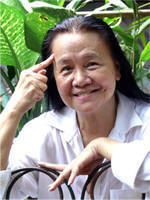
Alcantara was fearless and unstoppable in her advocacy. Environmentalist Leonor "Inday" Berroya told Inquirer.net how Alcantara "[stopped] motorists spewing noxious fumes and [lectured] them," while painter Ivi Avellano Cosio recalled an instance when Alcantara cursed and told off utilities staff who said a pile of burning garbage is not their responsibility, not caring about the armed guard with the staff.
In memory of an eco-warrior: So known was she as an environmental advocate that when she passed away in 2009 due to aneurysm, a circulating text message read: "In lieu of flowers, Tita Odette would most likely prefer donations of saplings and seedlings."
Her motto: "L-A-H-A-T: Lupa, Araw, Hangin, Ako, Tubig. Lahat magkaugnay."
MANILA, Philippines – While heroes can be found anywhere, not everyone becomes famous.
There are those who quietly do their job with excellence, honesty, and integrity, and are still considered heroes. Sometimes, because of their dedication, they even risk their lives. And a lot of them are serving in government.
With a known environment activist at the helm of the Department of Environment and Natural Resources (DENR), the agency has been making headlines for its fight against illegal environmental practices such as the back-to-back shutdown of mining operations in different parts of the country. She has also urged the DENR officials to “inspire people and be proactive.“
As we celebrate the National Heroes Day, here are some of the stories of our environmental heroes: those who sacrificed their lives to protect the country’s environment.
National Heroes Day. Celebrated as early as 1931, the holiday honors and remembers all Philippine national heroes. Here are a few facts related to this occasion.
Melania Dirain, The Forest Specialist
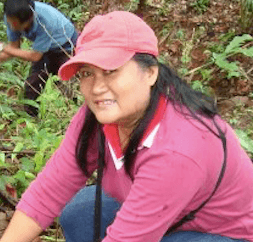 As a forest specialist, part of Dirain’s job was the enforcement of foreign protection laws, including policies against illegal logging.
As a forest specialist, part of Dirain’s job was the enforcement of foreign protection laws, including policies against illegal logging.Because of this, Dirain received death threats for months, but she still continued on her crusade.
On February 7, 2012, Dirain was shot to death while talking to an office messenger. A report on the Philippine Daily Inquirer said Dirain was talking to Isaias Cereniado inside her office, when a man barged in and shot 5 five times in the chest. Her 3 sons suddenly became orphans (she was a widow; her husband died a few years before).
That same year, Dirain was given the Dangal ng Bayan award by the Civil Service Commission. She was also given the “Bayani ng Kalikasan” award by the Center for Environmental Concerns.
According to Rare, a partner international conservation organization of the DENR, Dirain “pioneered the use of cell phones to anonymously report illegal forest activities.”
Jojo Malinao, The Forest Guard
Malinao was a forest guard at the Makiling Forest Reserve in Laguna. His job included diligently patrolling the forest and protecting it against destructive activities such as timber poaching, illegal occupancy, kaingin (slash-and-burn agriculture), and littering. He also served as a witness in cases involving these illegal practices.
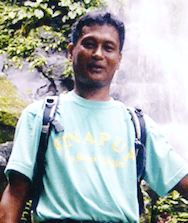
On the day of his death on May 9, 2011, he testified during the hearing of Armando Javier and Napoleon Oliveros, who were both charged with violation of the Revised Forestry Code of the Philippines, according to a report from the Inquirer.
After the hearing, he went to a tarpaulin shop in Bay, Laguna, where he was shot to death by a man on a motorcycle.
According to testimonies of those close to him, he was once offered P100,000 ($2,153) for bribe but rejected it and said, “Patayin na lang nila ako.” (They can kill me instead.)
Logendrin Aranca, The Forest Ranger and Bernabe Malijao, The Tree Maker
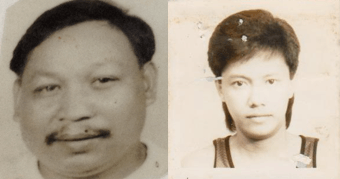
Onboard a motorcycle, Aranca and Malijao followed the jeepney for 4 to 5 kilometers. When they reached Barangay Paagahan in Mabitac, Laguna, the two overtook the jeepney, but unfortunately, the jeepney rammed the rear end of the motorcycle.
Aranca and Malijao fell on the ground, their bodies crossed on top of each other. The driver put the car in reverse and ran over the bodies of the two men.
The resident later surrendered to the police and was jailed for double murder.
Wilfredo Bayucot, The Forest Ranger
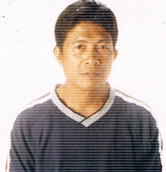
The driver of the truck then deliberately bumped Bayucot’s motorcycle, causing him and the driver to fall off the motorcycle. Bayucot died 3 days later.
Isidro de la Peña, The Forester
De la Peña is a forester in DENR’s Region XI office.
In 2003, de la Peña, along with a DENR staff member and a coast guard officer, apprehended the owners of 4 container vans at Davao City’s Sasa Wharf that were already being readied to be loaded to a vessel. The van, carrying illegally cut lumber, did not have the necessary documents.

Almost a year after the incident, on September 28, 2004, de la Peña was shot to death 3 times at the intersection of Balusong and McArthur Hi-way in Matina, Davao City. His team members then received anonymous death threats like, “You will be the next.”
Jaime Diez, The Tree Maker
Diez is a tree maker at DENR – CENRO in Bayugan, Agusan Del Sur.
During his stint, he was responsible for the confiscation of about 6,695 pieces of lumber and 951 pieces of mixed dipterocarp logs at the Ojot Monitoring Station in 2011, with an estimated value of over P2.4 million (approximately $51,600 in the current exchange rate).
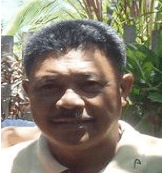
Because of this, Diez received death threats until he was gunned down inside his bedroom, beside his wife, on February 22, 2012 – just 15 days after Melania Dirain was also killed. Meanwhile, the gunman was able to escape. His wife and friends, however, continued to receive death threats after the shooting incident.
Opportunities for families left behind.
In June 2016, the Environmental Heroes Foundation Incorporated gave 5 of the slain employees the Environmental Heroes award. The families they left behind were given livelihood assistance worth P300,000 ($6,457).
EHFI is a non-profit organization established to promote the welfare of DENR officials who lost their lives or are permanently disabled while on duty, in the course of implementing environmental laws and policies.
In 2013, the orphaned children of the awardees were also offered scholarship program by the DENR.
During its 111th anniversary, the Civil Service Commission generated P300,000 ($6,457) from a fun run it organized. The proceeds from the event were donated to the families of the victims as well.
According to DENR, the awardees were killed during missions against suspected illegal loggers operating in so-called illegal logging “hotspots” identified by the agency. – Rappler.com
Sources: Civil Service Commission and Department of Environment and Natural Resources
Part 4 - Ecological Concept of the Cross
Dr Abe V Rotor
Dead Tree Walking
I am the ghost that walksfrom a forest before;I am the conscience of mansleeping in its core.I am the memoryfrom the distant past;lost among the throng,living in the dust.I came from Paradise lost,orphaned by the First Sin;the hands that cared for mecan't now be seen.I long for a heaven, too,a gift of being good and true,but if heaven is only for man,I did serve him through.But I am a ghost now.Would man join me for a walkto tell the world the storyof a once mighty oak? ~
Author's Note: Is the kapre that dwells in old big trees true after all? Utter tabi tabi (bari bari Ilk) while making your way on an unbeaten path. Pour a few drops of your drink before you down your glass. Have you heard the song of a whale? How about that of a mermaid? Anaconda can grow up to 20 meters long! You are lucky if you can pick a leaf of makahiya (Mimosa pudica) fresh and not drooping. If you find a four-leaf clover don't miss the lottery. ~
Living with Nature - School on Blog
Encyclical letter Laudato Si of Pope Francis in 6 chapters:
1. WHAT IS HAPPENING TO OUR COMMON HOME
"Praised be You my Lord with all Your creatures,"(St Francis of Assisi) is the basis of Pope Francis' encyclical letter, Laudato Si (Praise be to you.) Pope Francis encyclical letter On Care for Our Common Home. Saint Francis was canonized by Pope Gregory IX on July 16, 1228; he is the Patron Saint of Catholic Action, animals, and the environment. His Feast day is celebrated on October 4 of each year.
Praised be You my Lord with all Your creatures,
especially Sir Brother Sun,
Who is the day through whom You give us light.
And he is beautiful and radiant with great splendour,
Of You Most High, he bears the likeness.
Praised be You, my Lord, through Sister Moon and the stars,
In the heavens you have made them bright, precious and fair.
Praised be You, my Lord, through Brothers Wind and Air,
And fair and stormy, all weather's moods,
by which You cherish all that You have made.
Praised be You my Lord through Sister Water,
So useful, humble, precious and pure.
Praised be You my Lord through Brother Fire,
through whom You light the night and he is beautiful
Praised be You my Lord through our Sister,
Mother Earth who sustains and governs us,
producing varied fruits with coloured flowers and herbs.
Blessed are those who endure in peace, By You Most High, they will be crowned.
Praised be You, my Lord through Sister Death,
from whom no-one living can escape. Woe to those who die in mortal sin!
No second death can do them harm. Praise and bless my Lord and give Him thanks,
And serve Him with great humility.
Laudato Si of Pope Francis
Pope Francis - the Ecologist and the Good ShepherdPart 6 - Laudato Si (Praise be to you.) Pope Francis encyclical letter On Care for Our Common Home.
Two Prayers of the Holy Father Francis he offered at the conclusion of Laudato Si
A prayer for our earth
All-powerful God, you are present in the whole universe
and in the smallest of your creatures.
You embrace with your tenderness all that exists.
Pour out upon us the power of your love,
that we may protect life and beauty.
Fill us with peace, that we may live
as brothers and sisters, harming no one.
O God of the poor,
help us to rescue the abandoned and forgotten of this earth,
so precious in your eyes.
Bring healing to our lives,
that we may protect the world and not prey on it,
that we may sow beauty, not pollution and destruction.
Touch the hearts
of those who look only for gain
at the expense of the poor and the earth.
Teach us to discover the worth of each thing,
to be filled with awe and contemplation,
to recognize that we are profoundly united
with every creature
as we journey towards your infinite light.
We thank you for being with us each day.
Encourage us, we pray, in our struggle
for justice, love and peace.
A Christian prayer in union with creation
Father, we praise you with all your creatures.
They came forth from your all-powerful hand;
they are yours, filled with your presence and your tender love.
Praise be to you!
Son of God, Jesus,
through you all things were made.
You were formed in the womb of Mary our Mother,
you became part of this earth,
and you gazed upon this world with human eyes.
Today you are alive in every creature
in your risen glory.
Praise be to you!
Holy Spirit, by your light
you guide this world towards the Father’s love
and accompany creation as it groans in travail.
You also dwell in our hearts
and you inspire us to do what is good.
Praise be to you!
Triune Lord, wondrous community of infinite love,
teach us to contemplate you
in the beauty of the universe,
for all things speak of you.
Awaken our praise and thankfulness
for every being that you have made.
Give us the grace to feel profoundly joined
to everything that is.
as channels of your love
for all the creatures of this earth,
for not one of them is forgotten in your sight.
Enlighten those who possess power and money
that they may avoid the sin of indifference,
that they may love the common good, advance the weak,
and care for this world in which we live.
The poor and the earth are crying out.
help us to protect all life,
to prepare for a better future,
for the coming of your Kingdom
of justice, peace, love and beauty.
Praise be to you!
Amen.
Given in Rome at Saint Peter’s on 24 May, the Solemnity of Pentecost, in the year 2015, the third of my Pontificate.
Life of Saint Francis of Assisi
Three years later in 1210, his companions numbered 12 and Francis received the approval of Pope Innocent 111 to lead a life according to the Rule of the Holy Gospel. They became a band of roving preachers of Christ, thus began the Friars Minor, or Lesser Brothers. Rejecting all material goods, Francis and his brothers preached throughout Italy. They summoned people to faith and penitence, refused even corporate ownership and ecclesiastical preference. Saint Francis never became a priest out of humility. Francis’ practice of poverty and devotion to the humanity and Passion of Christ resonated in the hearts of a world grown spiritually cold; soon a vast Franciscan movement swept through Europe. By 1219, over 5,000 Franciscans gathered at Assisi for the famed Chapter of Mats. Francis subsequently founded a Second Order through Saint Clare of Assisi for cloistered nuns. A Third Order for religious and laity of both genders was also formed. Worn out by his apostolic efforts, pained by the stigmata he had received in 1224 and blinded by eye disease, Francis died at sunset, October 3, 1226.
The simplicity, directness, and single-mindedness in his devotion to Christ, and his lyrical multi-faceted life, have allowed Saint Francis to capture the heart and imagination of men and women of all religious persuasions. Notable Franciscans who have served the Church through the centuries are Saint Anthony of Padua, Saint Leonard of Port Maurice, Saint Bonaventure, and Saint Padre Pio of Pietrelcina.
Saint Francis was canonized by Pope Gregory IX on July 16, 1228; he is the Patron Saint of Catholic Action, animals, and the environment. His Feast day is celebrated on October 4 of each year.
Acknowledgement: Internet reference and photos
______________________________
Part 7 - Summary Quotes under each Chapter of Laudato Si
From an Article written by Kevin Cotter
Summary quote of this chapter’s message: “But a sober look at our world shows that the degree of human intervention, often in the service of business interests and consumerism, is actually making our earth less rich and beautiful, ever more limited and grey, even as technological advances and consumer goods continue to abound limitlessly. We seem to think that we can substitute an irreplaceable and irretrievable beauty with something which we have created ourselves” (#34).
CHAPTER TWO – THE GOSPEL OF CREATION
Summary quote of this chapter’s goal: “Why should this document, addressed to all people of good will, include a chapter dealing with the convictions of believers? I am well aware that in the areas of politics and philosophy there are those who firmly reject the idea of a Creator, or consider it irrelevant… Nonetheless, science and religion, with their distinctive approaches to understanding reality, can enter into an intense dialogue fruitful for both” (#62).
Summary quote of this chapter’s message: “We are not God. The earth was here before us and it has been given to us…. Although it is true that we Christians have at times incorrectly interpreted the Scriptures, nowadays we must forcefully reject the notion that our being created in God’s image and given dominion over the earth justifies absolute domination over other creatures.
The biblical texts are to be read in their context, with an appropriate hermeneutic, recognizing that they tell us to ‘till and keep’ the garden of the world (cf. Gen 2:15). ’Tilling’ refers to cultivating, ploughing or working, while ‘keeping’ means caring, protecting, overseeing and preserving. This implies a relationship of mutual responsibility between human beings and nature. Each community can take from the bounty of the earth whatever it needs for subsistence, but it also has the duty to protect the earth and to ensure its fruitfulness for coming generations” (#67)
Summary quote of this chapter’s goal: “It would hardly be helpful to describe symptoms without acknowledging the human origins of the ecological crisis. A certain way of understanding human life and activity has gone awry, to the serious detriment of the world around us. Should we not pause and consider this? At this stage, I propose that we focus on the dominant technocratic paradigm and the place of human beings and of human action in the world” (#101).
Summary quote of this chapter’s message: “It can be said that many problems of today’s world stem from the tendency, at times unconscious, to make the method and aims of science and technology an epistemological paradigm which shapes the lives of individuals and the workings of society.
The effects of imposing this model on reality as a whole, human and social, are seen in the deterioration of the environment, but this is just one sign of a reductionism which affects every aspect of human and social life. We have to accept that technological products are not neutral, for they create a framework which ends up conditioning lifestyles and shaping social possibilities along the lines dictated by the interests of certain powerful groups” (#107).
Summary quote of this chapter’s goal: “Since everything is closely interrelated, and today’s problems call for a vision capable of taking into account every aspect of the global crisis, I suggest that we now consider some elements of an integral ecology, one which clearly respects its human and social dimensions” (#137).
Summary quote of this chapter’s message: “We urgently need a humanism capable of bringing together the different fields of knowledge, including economics, in the service of a more integral and integrating vision. Today, the analysis of environmental problems cannot be separated from the analysis of human, family, work related and urban contexts, nor from how individuals relate to themselves, which leads in turn to how they relate to others and to the environment” (#141).
CHAPTER FIVE – LINES OF APPROACH AND ACTION
Summary quote of this chapter’s goal: “So far I have attempted to take stock of our present situation, pointing to the cracks in the planet that we inhabit as well as to the profoundly human causes of environmental degradation. Although the contemplation of this reality in itself has already shown the need for a change of direction and other courses of action, now we shall try to outline the major paths of dialogue which can help us escape the spiral of self-destruction which currently engulfs us” (#163).
Summary quote of this chapter’s message: “Interdependence obliges us to think of one world with a common plan. Yet the same ingenuity which has brought about enormous technological progress has so far proved incapable of finding effective ways of dealing with grave environmental and social problems worldwide. A global consensus is essential for confronting the deeper problems, which cannot be resolved by unilateral actions on the part of individual countries.” (#164)
CHAPTER SIX – ECOLOGICAL EDUCATION AND SPIRITUALITY
Summary quote of this chapter’s goal: “Many things have to change course, but it is we human beings above all who need to change. We lack an awareness of our common origin, of our mutual belonging, and of a future to be shared with everyone. This basic awareness would enable the development of new convictions, attitudes and forms of life. A great cultural, spiritual and educational challenge stands before us, and it will demand that we set out on the long path of renewal” (#202).
Summary quote of this chapter’s message: “In calling to mind the figure of Saint Francis of Assisi, we come to realize that a healthy relationship with creation is one dimension of overall personal conversion, which entails the recognition of our errors, sins, faults and failures, and leads to heartfelt repentance and desire to change” (#218).
The Ramon Magsaysay Award is in recognition of greatness of spirit shown in service to the peoples of Asia. Since 1958 the Award has been given to more than 270 individuals and organizations in 22 Asian countries and territories.
The Ramon Magsaysay Award is the counterpart of the Nobel Prize Award. Like the latter, it epitomizes the common tao the masa, in the words of the late President Ramon Magsaysay, the grassroots where rise greatness in the true sense of the the unknown soldier of change, of peace, of brotherhood, of freedom, of selflessness.

Krisana Kraisintu - Thai. For placing pharmaceutical rigor at the service of patients through her untiring and fearless dedication to producing much-needed generic drugs in Thailand and and elsewhere in the developing world.
 Deep Joshi - Indian. For his vision and leadership in bringing professionalism to the NGO movement in India by effectively combining head and heart in the transformative work of rural development.
Deep Joshi - Indian. For his vision and leadership in bringing professionalism to the NGO movement in India by effectively combining head and heart in the transformative work of rural development. Yu Xiaogang - Chinese. For fusing social science knowledge with a deep sense of social justice, in assisting dam-affected communities in China to shape the development projects that impact their natural environment and their liv
Yu Xiaogang - Chinese. For fusing social science knowledge with a deep sense of social justice, in assisting dam-affected communities in China to shape the development projects that impact their natural environment and their livAntonio Oposa Jr. - Filipino. For his pathbreaking and passionate crusade to engage Filipinos in acts of enlightened citizenship that maximize the power of law to protect and nurture the environment for themselves, their children, and generations still to come.

Ma Jun - Chinese. For harnessing the technology and power of information to address China's water crisis, and mobilizing pragmatic, multisectoral, and collaborative efforts to ensure sustainable benefits for China's environment and society.

Ka Hsaw Wa - Burmese. For dauntlessly pursuing nonviolent yet effective channels of redress, exposure, and education for the defense of human rights, the environment, and democracy in Burma.
The Ramon Magsaysay Awardees constitute an emerging new breed of heroes our society and the whole world need in these trying times.~
Environmental revolution has actually started with the age of industrialization, and it will take a very long time and a very complex process to be able to settle it. Environmental revolution does not pit man against nature, as it had been since the dawn of mankind. It is not the conventional revolution of society where man is pitted against man, or nation against nation for political reasons. It is not religious war. It is not a war of ideologies.
For the first time we humans must work together to preserve nature for the very survival of our species, and for the sake of saving Mother Earth, our only home and spaceship which carries all of us in our journey into the perilous unknown universe. It is a war we cannot afford to lose because it also spells the survival of the whole living world.
Let me state the some environmental concerns related to the topic of Dr. Tai’s paper, and relate them with current situations, understanding and outlook.
There are conflicting views of change.
Scientific knowledge and government policies often disagree and run into conflict at each other. Economics and ecology, though they share a common root word and foundation, are strange bedfellows, so to speak.
Yet these entities support common goals geared toward change. Change has to be viewed more than the measures of GNP, ROI, currency exchange rate, balance of trade, and the like, and should not only be confined to Human Development Indices, such as literacy rate, mortality rate and population density.
While these are considered immediate parameters mainly to benefit man and his society, certain questions on sustainability and environmental preservation are left unanswered. How do we ensure future generations. We feel more and more wary about the term progress. We ask ourselves what is “progress without conscience?” And whose development? What is the relationship between progress with posterity?
I remember the late Dr. Dioscorro Umali, national scientist, who addressed the graduating class of UP Diliman in 1992 with this moving statement, “Be the heroes we never were.” The essence of his speech is that the previous - and especially the present generation - have left little for the next generations to inherit. “We have not only abused the bounties of Nature,” he said, “we have destroyed her as well. The hero concept of Dr. Umali revolutionizes traditional and conventional definition of a hero. He is more than a nationalist, an economist, or an ideologist as we know, but a hero for Mother Earth, borrowing the term of Time Magazine.
-------------------------
Today, rather than defending himself against nature, man realized, he needed to defend nature against himself. - AV Rotor, Light from the Old Arch
--------------------------
Who are heroes for Mother Earth?
Environmental movements have roots traced to ancient cultures as can be gleamed from our own centuries old Ifugao Rice Terraces. Throughout history as civilizations grew and spread the environment became a sacrificial lamb. Such euphoric phrases “all roads leading to Rome,” “the beauty that glory that was Greece, the grandeur that was Rome,” “the sun never sets on English soil,” and the eight wonders of the world may reflect man’s ultimate achievements, yet all these were ephemeral in the mist of time in man’s dreams. In the end, it was nature that took them from the hands of man. The loss of natural environments has lead to the decline of civilizations and their subsequent demise.
----------------------------------------------------------------------------------------------------
Revival of environmental awareness came at the heels of the Renaissance. In the 12th century St. Francis of Assisi brought a new concept of devotion. Brother Sun, Sister Moon, and all the creatures on Earth our friends, laid down the foundation of naturalism in the Christian church reviving much of the Aristotelian naturalism. It is fitting that St. Francis of Assissi is regarded as the father of ecology.
----------------------------------------------------------------------------------------------------
Time Magazine came up with a list of heroes for Planet Earth, among them are naturalist philosophers or conservationist philosophers are Ralph Waldo Emerson, Henry David Thoreau, John Muir, Aldo Leopold, and Rachel Carson.
• Ralph Waldo Emerson claimed that “behind nature, throughout nature, spirit is present.”
 • Henry David Thoreau spoke of the side of “truth in nature and wilderness over the deceits of civilization.”
• Henry David Thoreau spoke of the side of “truth in nature and wilderness over the deceits of civilization.”• Muir believed that “wilderness mirrors divinity, nourishes humanity, and vivifies the spirit.”
• Leopold was behind the development of policies in wilderness and game management. “Wilderness is the raw material out of which man has hammered the artifact called civilization.”
 • Rachel Carson published Silent Spring, which dramatized the potential dangers of pesticides to food,
• Rachel Carson published Silent Spring, which dramatized the potential dangers of pesticides to food,wildlife, and humans causing wide spread damage to the ecosystem.
• Chico Mendes was a front liner in environmental conservation. He lost his life defending the concept of “extractive reserves” to conserve the Brazilian Rainforest that provided livelihood of the people against the conversion of the forest into ranches and plantations.
Other heroes of planet Earth cited by Time include
• Barbara Ward, author of Only One Earth which shaped the UN environmental conference.
• Ernest Schumacher who did not believe in endless growth, mega-companies and endless
consumption, author of Small is Beautiful, a best seller since the sixties.
• Jacques-Yves Cousteau, oceanographer who espoused the need to arrest the declining health of the oceans.
In the Philippines, Macli-ing, a staunch protector of ancestral lands in Kalinga-Apayao from the encroachment of the mammoth Upper Chico River dam, was gunned down allegedly to silence him. All aver the world there are the likes of Macli-ing, like Chico Mendes, and Ken Saro-Wiwa, a leader from the Ogoni tribe, and many more who, we may compare to the Unknown Soldier, but this time a soldier in defense of nature.
----------------------------------------------------------------------------------------------------
We must be prudent in endorsing people for their contributions to the environment until parameters are clearly set, and that we should allow time to make the final judgment. A case in point is DDT, the miracle pesticide against malaria in the forties and fifties. For this the discoverer received the Nobel Award. But in the following years it was discovered that DDT is a poison that persists in the food chain, making it harmful to living organisms and deleterious to human health. AVR
----------------------------------------------------------------------------------------------------
People have varying opinions when defining Environmental Philosophy.
There are those who believe that nature shall serve humanity. On the other hand there are those who believe that humanity shall serve nature. And there are those who say, it is “something in between”.
Nature, growth, and progress are concepts that we all use, but which we seldom define either in discussion or to ourselves. We speak about environmental ethics, environmental philosophy, eco-philosophy, and so on, but what do we put into these concepts? We seldom make them explicit or draw conclusions from them. “Trying to answer these philosophical questions does not, of course, in itself solve any environmental problems,” say ecologists Enger and Smith, “but on the other hand it is questionable whether we can solve these problems without discussing them on a philosophical level.”
It is then important to view environmental philosophy with ethics and morals. Ethics is a branch of philosophy that seeks to define fundamentally what is right and what is wrong, regardless of cultural differences. Morals differ somewhat from ethics because morals reflects the predominant feelings of a culture about ethical issues.
How do we illustrate this? A student of mine asked me this question, “Is it a sin to cut a tree?” This question touches ethics and morals, above social and economic considerations. It also pertains to legislation, such as whether we should advocate total log ban or selective logging. It even boils down to analyzing a syndrome known as “tragedy of the commons.” Let us analyze it this way.
a. The naturalistic concept that trees are the source of life is losing its essence as communities grow, and as people tend to move and live in urban places. It is a concept that is being taken for granted even as people become learned. Yet since evolutionary time plants have been providing the basic needs of man – food, clothing, shelter, medicine and energy. The harvesting of plants and their products has been part of human sustenance, as such they must be used properly. This ethnic view was also the basis of early agriculture. It is the key to a sustainable relationship between man and nature that lasted for eons of time.
b. Like Gold Rush, new lands became the target of economic exploitation, as the frontiers were pushed to the limit. New lands were placed under agriculture, which included our own Mindanao. Accessibility to forests and the wildlife became more and more feasible. Original forests were replaced with ranches, and plantations. Economics was the name of the game. In spurred the second green revolution, and agriculture dominated the trade and industry of the world. It eroded the ethnic relationship between man and nature. Beliefs about the tree spirit, forest deities (Maria Makiling), and nature worships have become mere superstitions and legends relegated to books and comics.
c. The final blow followed – industrialization. It is not only food that preoccupied man. Want over need incessantly drives man to convert lands into golf courses, human settlements, industrial sites, and all kinds of infrastructures. Imagine how easy, and how short a time it takes to destroy a whole forest which nature built for hundreds if not thousands of years, with giant machines of today. It is said that by the time we finish reading a paragraph of average length, three hectares of forest shall have been destroyed.
d. Post-modernism – a paradox of living tomorrow as we grope at the forefront of progressive innovation which usually means “violating traditional norms or ideas in all fields if human concern,” quoting Dr. Florentino Hornedo. “The human being who has abandoned his essence, nature and origin has also given up purpose and aim of existence. Life then becomes a “free play” of what forces may come which construct existence. Neither is there personhood or self to be ethically responsible for one’s action.”
I use this statement to raise questions of accountability of our actions, individually or by group. A businessman who is armed with a franchise to cut down a forest is understood to have accepted the attendant responsibility stipulated in the contract, which may include provisions in selective logging and replanting. But these are far from sufficient in providing the vital safety net of protecting the community and the environment.
I go back to the question, “Is it a sin to cut a tree?” This time the concept of the action has far reaching consequences based on the above-mentioned premises. I would return the question with reference to actual incidents.
• Who is responsible for the Ormoc City (Southern Leyte) tragedy caused by mudslide from a logged watershed? In this incident hundreds of residents were killed and millions of pesos were lost.
• The tragedy was repeated ten years after but on a lesser scale. As the perpetrators in the first tragedy have remained scot-free, so with those in the second tragedy.
• Five years have passed since the Real, Quezon, landslide that was similarly caused by massive illegal logging. What actions have government and society done?
• The Marinduque case of poisoning rivers and coastlines with mine tailings, which as a result, continue to destroy the ecosystem and deprive thousands of fisher folks from their livelihood. To date after twenty years the issue remains unsolved.
• Deserts continue to expand as a result of human activities. So with siltation of rivers and lake, shortening their usefulness and life span.
• Our Pantabangan dam, Ambuklao dam, and Binga dam, are heavily silted as a result of cutting down trees on their watershed. It is indeed a waste.
• All over the world we find similar cases: the shrinking of the Aral Sea in Russia, desertification, and marginalization of farmlands.
• The worst result in the endangerment of natural habitats and species, leading to irreversible loss of ecosystems and biodiversity.
All these lead us to re-examine our values. It challenges to look deeper into a paradigm of salvation through the regard we have on our environment.
----------------------------------------------------------------------------------------------------
There are few frontiers of production left today. We have virtually pushed back the sea and leveled off the mountain. Prime lands have all been taken, swamps have been drained, and even deserts are being reclaimed. But as we continue to explore the marginal edges of these frontiers the more we are confronted with high cost of production that is levied on the consumer, and more importantly, the danger of destroying the fragile environment. AVR
----------------------------------------------------------------------------------------------------
Ecological Paradigm (Why is Mother Earth complaining?)
The prolificacy of the human species sans war and pestilence, plus growing affluence of our society led to a population explosion which doubled in less than fifty years. We are now over six billion. This paradigm, master and subject have joined hands to exploit the earth’s finite resources. Our best economists may not be good housekeepers of Nature. While the aim is directed at the Good Life, they have unwittingly reduced the very foundation of that good life – the productivity and beauty of Mother Earth.
Ecological paradigm endorses an ecocentric approach where all forms of life and non-life are important to human life. Spirituality points out to a unitive force: the sacredness of everything. God’s divinity flows in everything. There is inte1gration in the universe. And we are part of that integration, exceedingly small as we are, notwithstanding.
Under ecological paradigm of salvation, the man responsible in the destruction of the environment leading to loss of lives and properties should be held accountable for it. Salvation does not come easy in this particular case, because he is not only responsible for the actual loss, but in healing nature back to health, so to speak. He cannot just get away with his ill-gotten wealth, he has to use it – among other resources - to amend his wrong doings.
Business versus Environment.
The environment and the economy need not be viewed as opposites. It is possible to have a healthy environment and a healthy economy at the same time. More and more businesses have begun adopting this concept as a business philosophy. People behind business organizations are becoming more aware of the ethical decisions they face, and their responsibility for their consequences.
A multi-national corporation, responding to the provisions of GRI (Global Reporting Initiative), CERES (Coalition of Environmental Responsible Economies), UNEP (United Nations Environmental Program), came up with the following thrusts:
• Restore and preserve the environment
• Reduce waste and pollution
• Education of the public on environmental conservation
• Work with government for sound and responsible environmental program
• Assess impact of business on the environment and communities.
More and more businesses are looking at this model with favor.
------------------------------------------------------------
Industrialization and urbanization are akin to each other. Industrial growth spurred the building of cities all over the world. Today there are as many people living in cities as those living the rural places. A mega-city like Tokyo has a population of 15 million people. We are 10 million in Metro Manila. Cities are fragile environments. Cities are more prone to epidemics such as the bubonic plague that killed one-third of the population of Europe. Now we are confronted with HIV-AID, SARs, meningo cochcimia – and the dreaded Avian flu which hovers as the next human pandemic disease. AVR
----------------------------------------------------------
Antarctica, World Park.
One of the few places on earth unexploited by humans is Antarctica. Not now, not until recently. With the Antarctic Treaty of 1991 declares that “Antarctica shall be open to all nations to conduct scientific or other peaceful activities there,” seven countries have already laid overlapping claims on the continent, which comprises one-tenth of the world’s total land area. Thousands of tourists are now visiting Antarctica every year. Scientific research is economically motivated, such as oil exploration, with geopolitical or military objectives in mind. Earlier – in the 1970s New Zealand proposed designating an Antarctica World Park, making it an international wilderness area. On the ecological point of view, Antarctica is fragile with simple and short food chains that support few organisms such as the penguin, whales, shrimp-like krill. Any slight disturbance is likely to upset the delicate balance. We have already caused the growing hole of the ozone layer above Antarctica through unabated release of CFCs , and fossil-fuel combustion worldwide.
Would humanity be better served by developing the natural resources of Antarctica than turning it into a world park and preserve its ecological balance? We also ask the same question to areas similar to Antarctica, such as the pristine wildlife of Canada, Greenland, the Yukon Territories, the unexplored islands of the Pacific, and main Amazon Basin.
Kyoto Protocol on Greenhouse Gases.
On December 10, 1997, 160 nations reached agreement in Kyoto, Japan, to limit emission of CO2 and other gases in order to arrest Greenhouse Effect threatening the whole world. But not all countries, signed the treaty, among them the US and Australia. Actually the Kyoto Protocol is not new. In 1992, some 170 countries ratified a similar treaty reducing emission of gases to the level of 1990 by 2000, but this did not yield the desired result.
Ecology and Stock Exchange.
In 2000, Earth Sanctuaries was listed on the Australian Stock Exchange, making it the world’s first conservation company to go public. We know that conservation efforts have been conventionally under foundations and government projects. But this time this intriguing approach to conserving the environment has raised as lot of questions. Does the market place really have a role in habitat preservation? Is this approach really conserving natural ecosystem or just creating large zoos? Would we rather save and give our children good education that helps rescue an endangered animal? Indeed the conflict between maximizing profits and conservation raises ethical issues.
Ecology advertising.
In the supermarket we find tags, organically grown, environment-friendly, eco-safe, environmentally safe, children-safe, ozone-friend, and so on. But are these claims true? Consider the following:
• Look for the three-phase symbol of recycling – three interacting arrows to form a triangle.
• When buying a refrigerator or airconditioner get the one that is freon-free, ozone friendly. Be sure the purchase is covered by company guarantee.
• Producers of food claimed to be safe, such as organically grown, must be able to show a reliable track record. It is good to trace the source of food that we eat, from beginning with production to processing, and ultimately to the dining table.
• Even materials claimed to be biodegradable, photo-degradable, and the like, may not be readily converted into safe materials. As a general rule, save money from “over-packaged” commodities, and you save the environment as well. Don’t be misled by package advertising, how attractive it may appear.
*Environmental Ethics: Human Life and the Environment, December 5-7, 2005
Rotor AV (2001) Light from the Old Arch, UST, 215 pp
Enger ED and BF Smith (1992) Environmental Science: A Study on Interrelationship, McGraw NY 486 pp
Scherff JS et al (1991) The Mother Earth Handbook: What you need to know and do – at home, in your community, and through your church – to help heal our planet now, Continuum 320 pp
Ivan Illich on the other hand, criticizes modern society and its failure to cater to human needs. He believes that the privileged today are not those who consume most but those who can escape the negative by-products of industrialization – people who can commute outside the rush hours, be born and die at home, cure themselves when ill, breathe fresh air, and build their own dwellings. People must arm themselves with the self-confidence and the means to run their own lives as far as possible, especially as big institutions like schooling, medical care and transport today are creating more problems than they solve. Politics is no longer a simple Left-Right choice; man must have a choice of energy, technology, education, etc., he calls vernacular values.
According to Andre Gorz the ecology struggle not as an end in itself but as essential part of the large struggle against capitalism and techno fascism. He champions a civil society shifting power from the State and political parties to local community and the web of social relations that individuals establish amongst themselves. The State’s role is to encourage self-management among the citizens. He envisions a Utopian future where “the citizens can do more for less,” and the development of a rich, all-round personality.
Definitely, while we need a revolution to save our environment, any means that is contrary to peace and unity, is definitely unacceptable. And we would not adhere to the rule of force or violence just to be able to succeed.
It is said, that revolution starts in a small corner. It could start in each of us.
- Interpersonal (social intelligence)
- Intrapersonal (meditational, spirituality)
- Kinesthetic (athletics, dance, body language)
- Languages or linguistic
- Logic (dialectics, mathematics)
- Music (Auditory art)
- Spatial intelligence (drawing and painting, sculpture, architecture, photography)
- Naturalism (green thumb, relationship with the Natural World)
“Every human being on this earth faces a constant problem: how to make the most of life. There is no simple solution; the art of living is the most difficult of all the arts. But fortunately for all of us, experience can be shared. Insights can be learned. Wisdom can be taught. Experiences, insights and wisdom of men and women – from teachers to clergymen, housewives to scientists, ordinary citizens to statesmen - who have lived deeply, thought profoundly and cared enormously about sharing with others what they learned have found some fragment of truth that cushions the harsh impact of reality or brightens the marvelous tapestry of living. From them we find some answers to the most fundamental of all questions: how to live with life.”
- Reflect on re-creating Nature with the image of the lost Eden
- Reflect on bringing the dead tree back to life.
- Reflect that everything in this world is interconnected. Reflect on the lost lamb, the prodigal son.
- Reflect on the new concept of heroes, hope of a tired Planet Earth
- Reflect that our lives can not be ruled by the faceless side of
- science and technology
- Reflect on long life but one lived with noble cause
- Reflect on that sailboat riding on the wave and wind towards a destination.
- Reflect on the multiple intelligence which God endowed singularly to man and how we make use of it in gratitude to the Giver.
 15. Our children become new heroes – heroes for the environment, martyrs for Mother Earth. Heaven is in a regained Paradise on earth. A universal faith, irrespective of denomination, is shaping up fast.
15. Our children become new heroes – heroes for the environment, martyrs for Mother Earth. Heaven is in a regained Paradise on earth. A universal faith, irrespective of denomination, is shaping up fast.18. Our children will realize that optimism will remain the mainstay of human evolution, rising above difficulties and trials. Hope is ingrained in the human brain that makes vision rosier than reality. Anxiety and depression will continue to haunt, in fact accompany progress, but these all the more push optimism up and ahead.
About the Author:
Abercio V. Rotor, Ph.D.
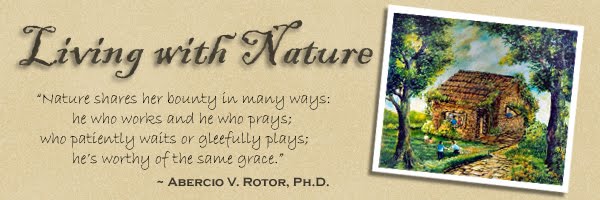
















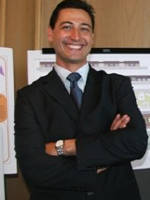



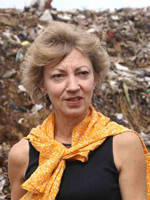



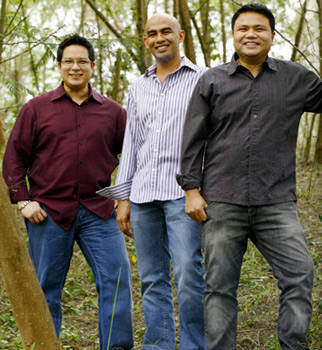



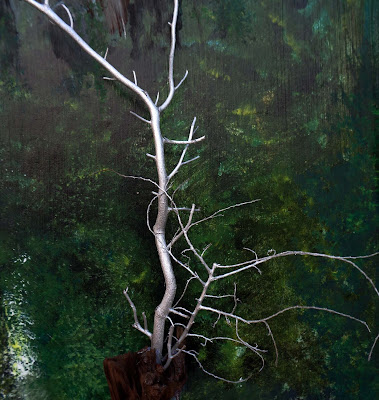





























No comments:
Post a Comment